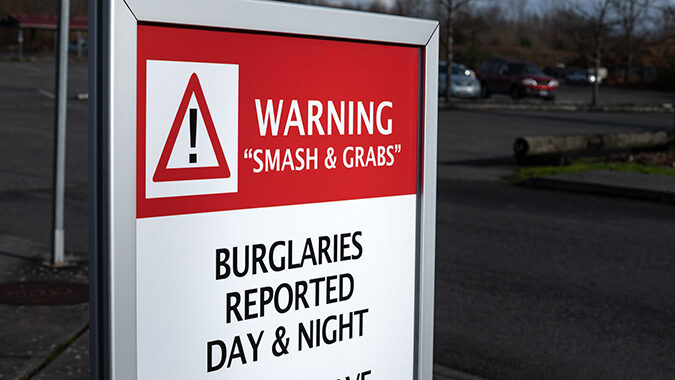A new report from the National Retail Federation finds that financial losses from theft are on the rise, and that these crimes are becoming increasingly violent.
The 2023 National Retail Security Survey found that the loss of inventory, known in the industry as the “shrink” rate, increased to 1.6% last year, up from 1.4% in 2021. When taken as a percentage of total retail sales in 2022, that shrink represents $112.1 billion in losses.
Shrink percentages can vary significantly by retail sector. On par with previous years, internal and external theft accounted for nearly two-thirds (65%) of retailers’ shrink. More than two-thirds (67%) of respondents said they were seeing even more violence and aggression from thieves in organized retail crime groups than before.
“Retailers are seeing unprecedented levels of theft coupled with rampant crime in their stores, and the situation is only becoming more dire," said NRF Vice President for Asset Protection and Retail Operations David Johnston.
"Far beyond the financial impact of these crimes, the violence and concerns over safety continue to be the priority for all retailers, regardless of size or category,” Johnston added.
Even though retailers continue to enhance their loss prevention and asset protection measures, sometimes more drastic action must be taken. Retailers reported being forced to close a specific store location (28%), reduce operating hours (45%) or reduce or alter in-store product selection (30%) as a direct result of retail crime.
As violence has increased, an increasing number of retailers have opted to enforce a “hands off” approach in the apprehension of shoplifters. More survey respondents said no employees are authorized to stop or apprehend shoplifters (41%), compared with 38% last year.
The types of products shoplifters are targeting may not be based solely on price point. Products can range from high-price, high-fashion items to everyday products that have a fast resale capability, including batteries, energy drinks, outerwear and footwear and kitchen accessories.
When asked about their theft prevention efforts, 34% of retailers said they have increased internal payroll to support their risks and 46% have increased the use of third-party security personnel. Over half (53%) have increased their technology and software solution budgets in the past year and 54% have increased or are increasing employee workplace violence training.
The top five cities/metropolitan areas affected by organized retail crime in the past year were Los Angeles, San Francisco/Oakland, Houston, New York and Seattle. The report said government policy decisions that have removed cash bail requirements and raised the felony theft threshold – the value of stolen goods required for the crime to be considered a felony – have hampered retailers’ efforts to combat the problem.




